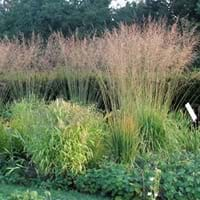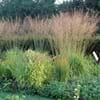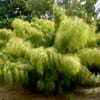Life Span
Perennial
Annual and Perennial
Type
Grass
Bulb or Corm or Tuber
Origin
Europe, Eastern Europe, Southern Europe, Russia/Siberia, Asia, Central Asia, Southern Asia
Latin America and the Caribbean, Central America, Micronesia
Types
Not Available
Hannah Yams, Japanese Sweet Potatoes
Number of Varieties
Not Available
Habitat
Boggy areas, Dry and Young forest Heaths, Lowland
Cold Regions, Tropical regions
USDA Hardiness Zone
5-8
11-12
Sunset Zone
1a, 1b, 2a, 2b, 3a, 3b, 4, 5, 6, 7, 8, 9, 14, 15, 16, 17
21,22
Habit
Arching/Fountain-shaped
Vining/Climbing
Minimum Width
Not Available
Flower Color
Dark Purple
Not Available
Flower Color Modifier
Bicolor
Bicolor
Fruit Color
Non Fruiting Plant
Not Available
Leaf Color in Spring
Green
Green, Purple, Light Green, Chartreuse, Bronze
Leaf Color in Summer
Light Green
Light Green
Leaf Color in Fall
Green, Gold
Several shades of Green
Leaf Color in Winter
Tan
Light Green
Leaf Shape
Needle like
Heart-shaped
Plant Season
Spring, Summer, Fall, Winter
Spring, Summer, Fall, Winter
Sunlight
Partial Sun, Partial shade
Full Sun, Partial Sun
Growth Rate
Slow
Very Fast
Type of Soil
Clay, Loam, Sand
Clay, Loam, Sand
The pH of Soil
Acidic, Neutral
Acidic, Neutral, Alkaline
Soil Drainage
Average
Well drained
Bloom Time
Early Summer, Summer, Late Summer, Early Fall
Late Fall, Early Winter, Winter
Tolerances
Not Available
Drought
Where to Plant?
Ground, Pot
Ground, Pot
How to Plant?
Divison, Transplanting, Vegetative Reproduction
Stem Cutting, Tuber propagation
Plant Maintenance
Low
Medium
Watering Requirements
Requires regular watering, Water more frequently during periods of extreme drought
Average Water Needs, Needs a lot of water initially
In Summer
Lots of watering
Lots of watering
In Spring
Moderate
Moderate
In Winter
Average Water
Average Water
Soil pH
Acidic, Neutral
Acidic, Neutral, Alkaline
Soil Type
Clay, Loam, Sand
Clay, Loam, Sand
Soil Drainage Capacity
Average
Well drained
Sun Exposure
Partial Sun, Partial shade
Full Sun, Partial Sun
Pruning
Prune in winter, Remove damaged leaves, Remove dead branches, Remove dead leaves
Remove damaged leaves, Remove dead branches, Remove dead leaves
Fertilizers
No need to fertilize every year
All-Purpose Liquid Fertilizer
Pests and Diseases
Pests and diseases free
Aphids, Beetles, Leafminers, Red blotch
Plant Tolerance
Not Available
Drought
Flower Petal Number
Single
Single
Foliage Texture
Medium
Coarse
Foliage Sheen
Matte
Matte
Attracts
Not Available
Aphids, Beetles, Mites, white worms
Allergy
Not Available
Abdominal pain, Skin rash, Swelling, Vomiting
Aesthetic Uses
Showy Purposes, Water gardening
Not Used For Aesthetic Purpose
Beauty Benefits
Not Available
Not Available
Environmental Uses
No fertilizer, pesticides, or herbicides needed
Air purification
Medicinal Uses
No Medicinal Use
Potassium, ß-carotene, Vitamin C
Part of Plant Used
Whole plant
Leaves, Root, Shoots
Other Uses
Used as Ornamental plant
Used As Food, Used for its medicinal properties
Used As Indoor Plant
No
Yes
Used As Outdoor Plant
Yes
Yes
Garden Design
Bedding Plant, Container, Cutflower, Dried Flower/Everlasting, Mixed Border
Container, Edible, Groundcover, Hanging Basket, Herb / Vegetable, Mixed Border, Vine
Botanical Name
Molinia arundinacea
IPOMOEA batatas
Common Name
Moor Grass
Sweet Potato, Sweet Potato Vine
In Hindi
Tall Moor Grass
शकरकंद
In German
Hoch Pfeifengras
Süßkartoffel
In French
Herbe Moor hauteur
Patate douce
In Spanish
Tall Grass Moor
Batata
In Greek
Ψηλός Moor Grass
Γλυκοπατάτα
In Portuguese
Alto Moor Relva
Batata doce
In Polish
Wysoki Moor Trawa
Słodki ziemniak
In Latin
Alta Maurus Grass
Dulcis SOLANUM TUBEROSUM
Phylum
Magnoliophyta
Magnoliophyta
Class
Liliopsida
Magnoliopsida
Order
Cyperales
Solanales
Family
Poaceae
Convolvulaceae
Clade
Angiosperms, Commelinids, Monocots
Angiosperms, Asterids, Eudicots
Tribe
Not Available
Not Available
Subfamily
Not Available
Not Available
Number of Species
Not Available
Season and Care of Molinia Arundinacea and Sweet Potato
Season and care of Molinia Arundinacea and Sweet Potato is important to know. While considering everything about Molinia Arundinacea and Sweet Potato Care, growing season is an essential factor. Molinia Arundinacea season is Spring, Summer, Fall and Winter and Sweet Potato season is Spring, Summer, Fall and Winter. The type of soil for Molinia Arundinacea is Clay, Loam, Sand and for Sweet Potato is Clay, Loam, Sand while the PH of soil for Molinia Arundinacea is Acidic, Neutral and for Sweet Potato is Acidic, Neutral, Alkaline.
Molinia Arundinacea and Sweet Potato Physical Information
Molinia Arundinacea and Sweet Potato physical information is very important for comparison. Molinia Arundinacea height is 90.00 cm and width 15.20 cm whereas Sweet Potato height is 60.00 cm and width Not Available. The color specification of Molinia Arundinacea and Sweet Potato are as follows:
Molinia Arundinacea flower color: Dark Purple
Molinia Arundinacea leaf color: Green
Sweet Potato flower color: Not Available
- Sweet Potato leaf color: Green, Purple, Light Green, Chartreuse and Bronze
Care of Molinia Arundinacea and Sweet Potato
Care of Molinia Arundinacea and Sweet Potato include pruning, fertilizers, watering etc. Molinia Arundinacea pruning is done Prune in winter, Remove damaged leaves, Remove dead branches and Remove dead leaves and Sweet Potato pruning is done Remove damaged leaves, Remove dead branches and Remove dead leaves. In summer Molinia Arundinacea needs Lots of watering and in winter, it needs Average Water. Whereas, in summer Sweet Potato needs Lots of watering and in winter, it needs Average Water.





